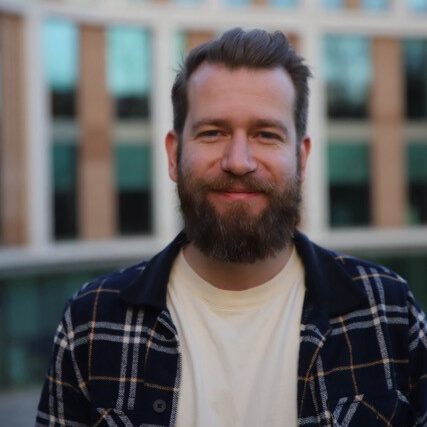
- This event has passed.
POPNET Connects with Bas Hofstra
22 May 2023 , 11:00 – 12:00 CEST
This seminar is hybrid. Please register to attend the seminar online or on-site via the button. You will receive a link to the virtual meeting via email or a confirmation containing the on-site location
Academic Migration: Interdisciplinary Hierarchy, Closure, or Similarity?
The last two decades have seen a surge in research initiatives in many scientific fields surrounding interdisciplinarity. This has spawned many interdisciplinary research centers on US university campuses supported by billions of raised university or federal grant money to educate students as well as to facilitate interdisciplinary exchange and collaborations between faculty. This is often led by the belief that interdisciplinary exchange in science pushes research fields forward and accelerates breakthrough discovery. Interdisciplinary scientific collaboration is argued to pull together diverse insights from multiple bodies of knowledge, is unrestricted by disciplinary boundaries or semantics, and can draw from a larger methodological tool set.
Yet in spite of the push for interdisciplinary exchanges, there is surprisingly little empirical knowledge on its prevalence, patterning, or determinants. This is remarkable, because prior work shows that the social fabric of science itself is inherently shaped by exchanges of ideas, knowledge, and scholars themselves. Here, we focus on the latter and study scholarly hiring between disciplines. How prevalent are such exchanges between disciplines and how did this develop over time? And, more importantly, what determines the emergence of these interdisciplinary exchange structures: do some disciplines disproportionately place faculty in other disciplines, do disciplines cluster in such a hiring network, or are interdisciplinary hires mostly explained by how intellectually similar discipline are? These questions motivate the main goals of this study: identifying patterns of interdisciplinary exchange and explaining the emergence and persistence of these network structures.
We build on and extend prior work, particular the branches of literature on interdepartmental faculty hiring. Hiring often involves exchange indicative of implicit judgment; when one department hires a graduate student of another as faculty, there is a positive assessment of the graduate department that places the student. The assortment of these dyadic exchanges across disciplines represent migration networks of scholars that illuminate disciplinary hierarchy, clustering, and similarity. Our study empirically considers these network dynamics, thus providing insight into which disciplines wield the most influence in knowledge and scholarly exchange and why.
Our empirical site contains a realized scientific migration market of approximately 1.03 million records of nearly all US PhD students and corresponding metadata – names, supervisors, disciplines, and so forth – from their PhD theses (1980-2010). These data capture a wide cross-section of scholarly disciplines (N = 51) PhD-granting universities (N = 221), and departments (N = 8,205). What is particularly useful about this database is that it allows us to follow PhD recipients through time in a near-closed system of PhD recipients and their scholarly careers moving onward, thus showing the interdisciplinarization – which disciplines place students where and why? – of US academia. We analyze these interdisciplinary exchanges through a series of stERGMs that include nodal (discipline size, popularity), dyadic (natural language processing measures of intellectual distance between disciplines, field homophily), and closure dynamics.

About Bas Hofstra
Bas Hofstra is Assistant Professor at Radboud University’s Department of Sociology. His work orbits the study of diversity, stratification, and innovation. It captures longitudinal systems of social and cultural exchange: from the gestation and birth of networks, careers, ideas, or innovations, to their use, up until their eventual cessation. As such, his work strives for three interrelated goals: (i) answering substantive questions on causes and effects of social networks, while (ii) contributing to social theory, and (iii) using computational methods and big data. His research appeared (among others) in PNAS, American Sociological Review, Social Forces, Social Networks, and Nature Human Behaviour, and was honored with several grants and awards.
